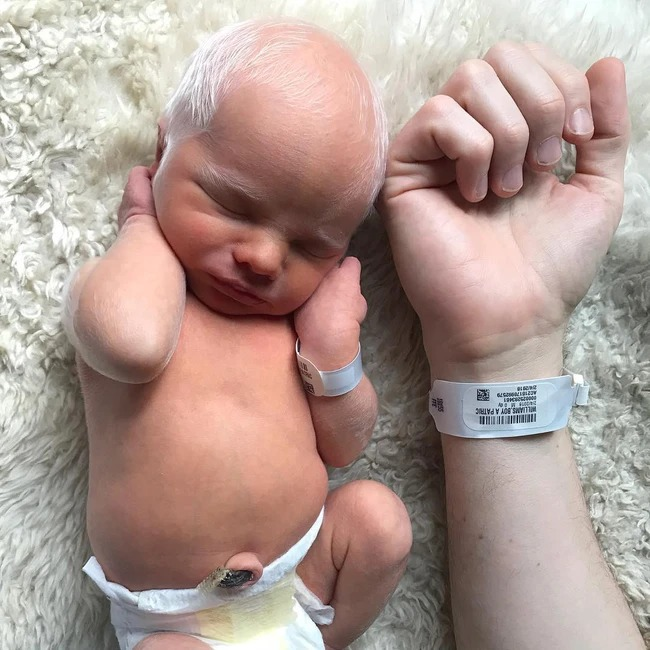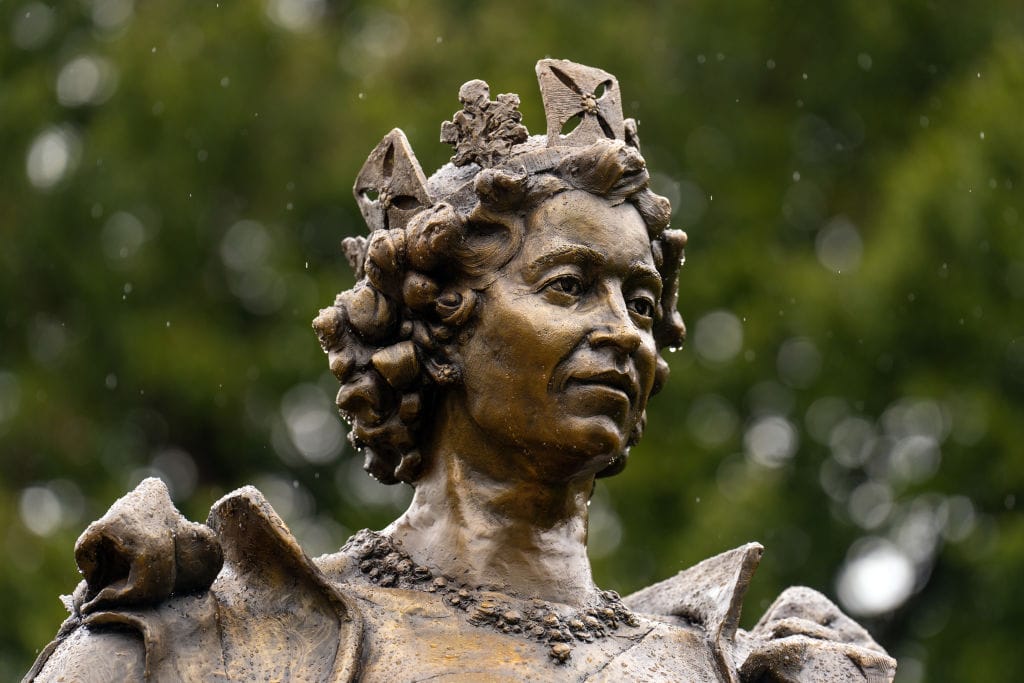
In 2012, Patricia and Dale Williams welcomed a special addition to their family: baby Redd. Amid their immense joy, they quickly noticed something unique about him—his snow-white hair, a striking feature that set him apart from other infants. When Redd was about two months old, his parents observed his eyes constantly moving from side to side, which sparked concern.
Worried, they searched online for information and suspected that Redd might have albinism. Determined to find answers, they scheduled appointments with optometrists and genetic specialists. Their suspicions were confirmed when Redd was diagnosed with Oculocutaneous Albinism Type 1 (OCA1), a rare condition affecting only 1 in 17,000 people worldwide.
Initially, the hospital staff marveled at Redd’s unique appearance, expecting his hair color to change as he grew older. However, after the diagnosis, Patricia realized that Redd’s distinctive white hair and blue eyes, which occasionally shimmered red in certain lights, would be a permanent part of his identity.
In 2018, the Williams family welcomed another son, Rockwell, who also shared Redd’s condition.
Despite their parents’ efforts to instill confidence, both Redd and Rockwell faced adversity at school, enduring teasing and bullying due to their appearance. Their older brother, Gage, who does not have albinism, became their protective shield, but the challenges persisted.
The family faced a distressing incident when a photo of Rockwell shared on social media turned into a meme and spread rapidly across the internet despite their pleas for its removal.
Refusing to let negativity overwhelm them, Patricia and Dale chose a different path—they became advocates, driven by a mission to raise awareness about albinism. Patricia’s social media platform grew significantly after Rockwell’s photo went viral, prompting numerous inquiries that revealed the widespread lack of understanding about albinism in society.
Redd underwent corrective eye surgery for his strabismus, transitioning from a specialized school for visually impaired children to a public institution. This decision significantly improved Redd’s life; the family opted for surgery over eye patches to minimize attention and reduce bullying.
On April 28, 2023, Patricia shared a heartwarming video of Rockwell participating in his school’s “Western Day.” This time, the response on social media was overwhelmingly positive, contrasting starkly with the past instances of name-calling and ridicule.
Today, both Redd and Rockwell are thriving in their own unique ways.
Consider sharing this story to spread awareness and support for individuals with albinism among your family and friends.
Newly-unveiled statue of Queen Elizabeth II includes her beloved pet Corgis

A great deal of people felt sorrow upon Queen Elizabeth II’s passing in 2022. She was adored by the public and the longest-reigning monarch in British history, having ruled for 70 years.
The late queen is now being honored with a monument that was recently unveiled, honoring her affection for her pet corgis!
The Queen’s new statue, together with her dogs
On Sunday, a 7-foot-tall bronze statue of Queen Elizabeth was unveiled in observance of the monarch’s 98th birthday.

In Oakham, England, the sculpture was made by artist Hywel Pratley and is situated close to the Oakham Library. It is Queen Elizabeth’s first ever permanent memorial.
Rutland City Council said that hundreds attended the unveiling. There was music from local school bands and bagpipers.
The most priceless feature of this new memorial is that the queen’s cherished Corgis pet is also depicted, immortalized in bronze by the monarch’s feet:

The city authority claims that local schoolchildren created the designs for the Corgi monuments.
In contrast to the many stern and imposing monuments of queens like Queen Victoria, Pratley stated he wanted the statue to portray the idea of Queen Elizabeth as “an almost motherly figure,” according to the New York Times.
During the unveiling, local dignitary Sarah Furness remarked, “What most of us remember about Queen Elizabeth is her warmth.” “We demonstrate Queen Elizabeth’s humanity by showcasing her affection for dogs.”

The statue’s creator claims that he intended it to be hospitable to onlookers. Pratley said, “We designed it with a bench you can sit on.” “And there’s a corgi you can pet, and I do believe that this will eventually become a selfie-encouraging statue.”
The Times reports that a number of Corgi owners brought their dogs to the unveiling, indicating that a large number of people have already visited the statue.
The history of Queen Elizabeth’s Corgis pet
For many years, the Queen’s corgis were an iconic aspect of her life and a solace during tough political and personal times. Fans all throughout the world were likewise pleased by the cute pets.
The first Corgi was acquired by the royal family in 1933 when Dookie, a dog owned by Elizabeth’s father and predecessor George VI (who was then the Duke of York), was brought home.

Dookie was reportedly extremely cantankerous, yet Elizabeth and him appeared to have a unique relationship.
Then, on her eighteenth birthday, the Queen received a Pembroke Welsh corgi of her own, named Susan.
Susan reportedly slipped under a rug in the royal carriage to disrupt the wedding of the Queen and her husband, Prince Philip, according to the BBC.
1959 saw Susan’s death at the age of almost fifteen. Her epitaph referred to her as “the faithful companion of the Queen,” and she was laid to rest at the royal estate of Sandringham House.
The Queen stated, “I had always feared losing her, but I am ever so thankful that her suffering was so mercifully brief.”
But Susan left quite the legacy; during the ensuing few decades, the Queen accumulated over thirty corgis, all descended from her original canine companion.
The Queen always had at least one corgi, and often had several at once, from 1933 until 2018. She traveled with the dogs in tow, and they resided in a designated “Corgi room” at Buckingham Palace with wicker beds. It is said that the Queen took care of them personally and baked them biscuits over the holiday season.

These canines undoubtedly received royal treatment and grew to represent the Queen throughout her life.
While Elizabeth valued the dogs greatly, Prince Philip apparently didn’t feel the same way. Like many others, she took great solace from the dogs, who served as a link to the simpler times in her early years due to their relationship with her late father and her upbringing.
According to Penny Junor, a royal biographer, “her corgis are hugely important to her.” Over time, they have become more intimate with her than any human has ever been. She has never been let down by the incredibly affectionate and devoted corgis.

It also makes sense that the Queen, who represents both Britain and the United Kingdom, would have a strong bond with a quintessential British dog. Wales, a member of the UK and a neighbor of England, is where corgis first originated. When corgis were adopted as royal dogs, the breed was rare in England; yet, the Queen had a major role in the globalization of the breed.
The Queen owned several “dorgis,” or corgis bred with daschshunds, in addition to purebred Pembroke Welsh Corgis.
When the corgis and dorgis appeared alongside Queen Elizabeth on the cover of Vanity Fair in 2016, they became well-known worldwide because to Annie Leibovitz’s photography. At the time, the dogs were Candy, Vulcan, Willow, and Holly.
A notable aspect of Queen Elizabeth’s reign and a significant aspect of her life were her corgis. Their inclusion in this first memorial statue of her seems so fitting.
Please tell this tale!




Leave a Reply